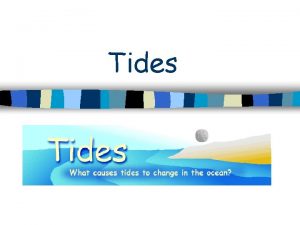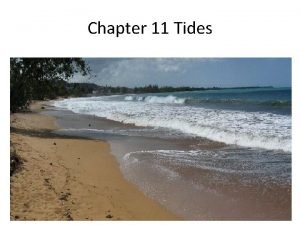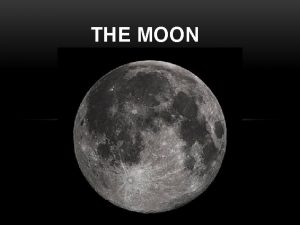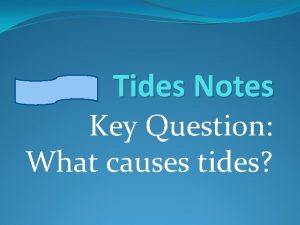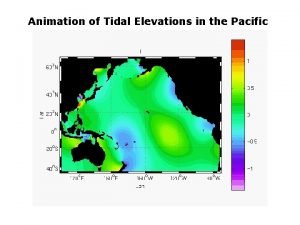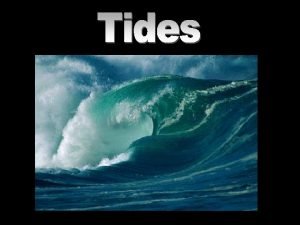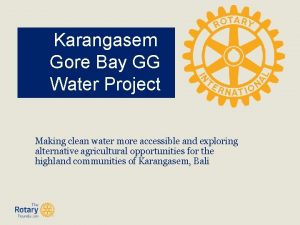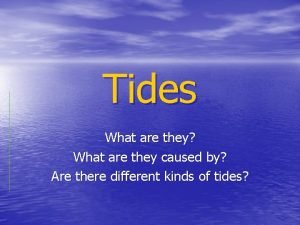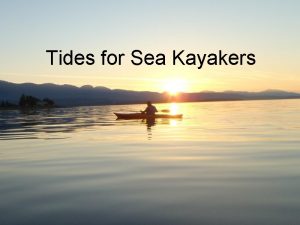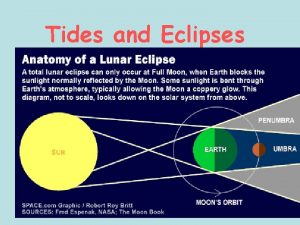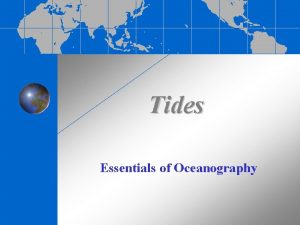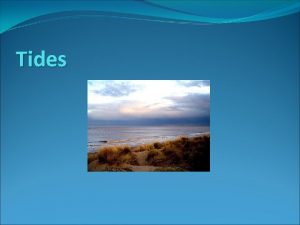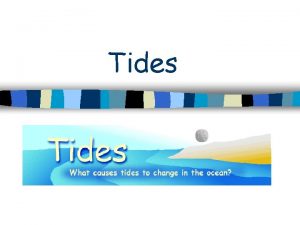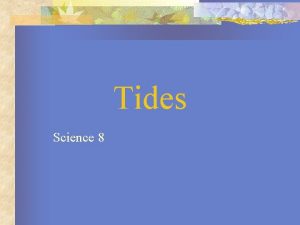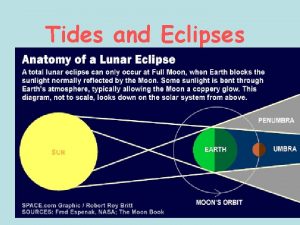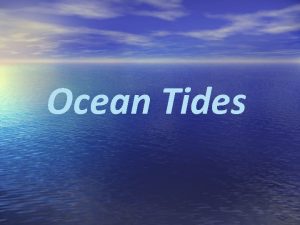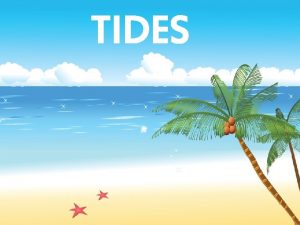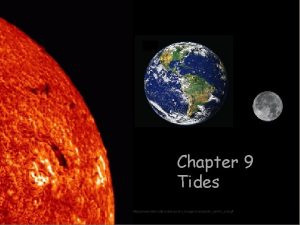Internal Tides Internal Tides Internal Tides are Internal

















- Slides: 17

Internal Tides

Internal Tides • Internal Tides are Internal Waves generated by the interaction between barotropic tide and bottom topography. • Internal gravity waves in the ocean (like many other gravity waves) occur due to vertical density gradients.

Group Velocity Large wavelength topography, i. e. K<N/U. L H H Small wavelength topography, i. e. K>N/U. L H K=2 p/l, sendo que o c. d. o. de transição (a distância percorrida por uma partícula num período N)dum caso para o outro é cerca de 300 m no oceano






North-South velocity field at a depth of 440 m resulting from the M 2 internal wave field in Monterey Bay 4 tidal periods after starting from rest and (b) the associated A-A’ transect, showing pronounced generation originating in the Monterey submarine canyon.

characteristics reflect upslope and there is energy propagation upslope the characteristics reflect downslope, and very little baroclinic energy propagates onto the slope When beams of internal tidal energy strike the continental margins, the result varies. If the characteristic angle of the beam is steeper than the slope of the seafloor (a), internal tidal energy is transmitted landward as it bounces between the seafloor and the base of the mixed layer. If the characteristic angle is shallower than the slope (b), the energy is reflected back toward the deep ocean. When these two angles are equal (c), the energy is trapped near the seafloor, where it may be sufficient to stir up the sediments or at least to prevent suspended sediments from settling out.


Nazaré Canyon : a few results



Important aspects observed during the study • Energy enhancement along the canyon floor propagating at an angle consistent with linear internal wave theory. • Asymmetric distribution of energy in the cross canyon direction (more energy is found at the southern side). • Nepheloid layers are well predicted from the linear internal wave theory.

Open Questions • Canyons that are subcritical have little baroclinic energy; on the other hand canyons that are near-critical develop strong internal tides that propagate shoreward (Petruncio et al. , 2002). • Canyons that are critical at their mouths but supercritical inshore generate the most internal tidal energy overall. Is this the difference between Nazaré and Setúbal?

• • The difference between the super and subcritical situations, when the bottom slope is respectively less than or greater than the characteristic slope. For supercritical slopes, the characteristics reflect upslope and there is energy propagation upslope. For subcritical slopes, the characteristics reflect downslope, and very little baroclinic energy propagates onto the slope. At near-critical slopes, the reflected characteristics form an intense beam, directed up- or downslope, which also indicates a beam of intense physical motion, in which the streamlines are parallel to the characteristics and there ire high velocities and energy fluxes For supercritical slopes, if the topographic and baroclinic length scales are almost equal, the baroclinic motion may be restricted to a forced standing oscillation over the slope, with little energy propagation into the deep ocean or onto the shelf.
 Mikael ferm
Mikael ferm Spring tide and neap tide
Spring tide and neap tide Compare and contrast spring tides and neap tides.
Compare and contrast spring tides and neap tides. Diurnal tide cycles occur ______.
Diurnal tide cycles occur ______. What phase is this
What phase is this Tides notes
Tides notes Tides animation
Tides animation He can turn the tides and calm the angry sea
He can turn the tides and calm the angry sea Waves and tides
Waves and tides During which phase of the moon do neap tides occur?
During which phase of the moon do neap tides occur? Alma tides
Alma tides Gore bay tides
Gore bay tides Stranger tides budget
Stranger tides budget Tides notes
Tides notes What are tides and how are they caused
What are tides and how are they caused Formation of tides
Formation of tides Mooloolaba tides
Mooloolaba tides Diurnal tides
Diurnal tides

